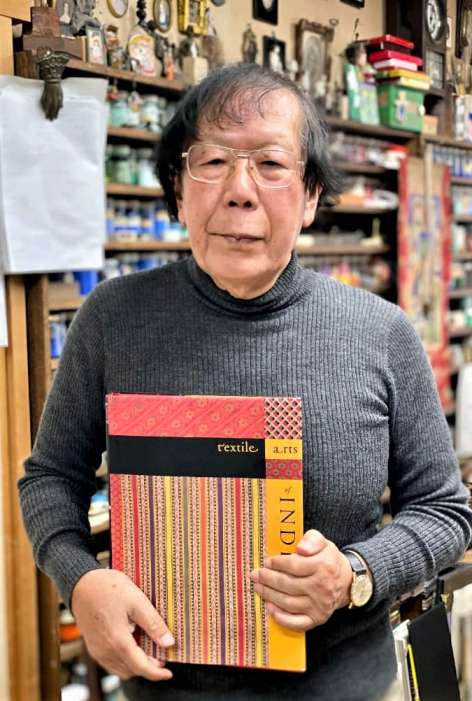Kokyo Hatanaka’s world of art & literature, and his decades-old connection with India
Erudite scholar-artist Kokyo Hatanaka’s deep association with India, spanning almost half a century, has enriched the world of art.
By Amrita Singh, a freelance writer and long-term resident of Japan
TOKYO: Kokyo Hatanaka is a contemporary Nihonga artist, an eminent author, and an avid collector. Born in 1947 in Nara, Hatanaka completed his graduation from Otani University and studied the ancient art form of Nihonga at Kyoto University. Fascinated by the dominance of Buddhist influence on art, he traveled to the Indian subcontinent to deepen his knowledge of Buddhist art. “Growing up, we were only exposed to Asian art and culture from China. I traveled to India as I was curious to learn about the land where Buddhism originated.” This initial curiosity grew into a lifetime of absorption.
Over a span of 48 years now, Hatanaka has made countless visits to India, each an adventure. “Every day in India is exciting. It’s like opening an ancient book of treasures – the people, landscape, history, and ancient culture are all an inspiration. I consume a multitude of narratives while journeying through the streets and lanes of India. Sitting in local buses, traveling on rickshaws…I have been to places where tourists wouldn’t dare to ever go. I travel like a local.” With a chuckle he says in Hindi: “Kai log mujhe Mizoram ka chitrakaar samajte hain.” (I’m sometimes mistaken as a painter from Mizoram).
As a man whose life is seeped in the study and practice of art, it was only natural for Hatanaka to go beyond his scholarly pursuit of Buddhist historic art. Indian miniature court paintings captivated him. “After the dark colors of European art and the black and white monotones of the Meiji Era art, I found the bright colors in Indian miniatures refreshing. The clean, well-defined art of line drawing is a thing of beauty. The simplicity of flat shapes drawn in pure pigments of rich color is exquisite. It is the basis of my work as an artist.” A celebrated artist and the recipient of several awards, Hatanaka has exhibited widely in India and internationally.

With such a depth of knowledge, needless to say, a conversation with Hatanaka is an experience in itself. Within the breadth of an afternoon, he spans ancestries of cultural expression, societal politics, and easily cross-references historic legacies, all with an unassuming grounded sincerity. While speaking of theology, Hatanaka suddenly breaks off and says, “In India, often, the first question people ask is, ‘What is your religion?’” He smiles gently before saying, “The true meaning of religion is: Thanks to everything that is not mine, I am.”
Among the books he has authored, one that stands out is the ‘Textile Art of India.’ A major body of work on Indian textiles, this book has emerged as one of the most iconic compilations of the history of textiles in India. Rare fabrics dating from the 17th century to the early 20th century have been tabulated with aesthetic photographs and meticulous explanations of weaving, printing and dyeing techniques involved. Hailed as an indispensable research reference, it is a true embodiment of Hatanaka’s love for the study of art history and his love of curating. “I have sourced these textiles from remote corners of India – places that will shock you!” He delights in discovering abandoned treasures from obscure markets and villages, and then carefully reconstructs the micro history of the salvaged objects.
His passion for collecting is evident as you walk through his home and studio in Kyoto. Every corner and surface is crammed with a fascinating mix of paintings, drawings, sculptures and books. “Please look anywhere you want,” he says with a warm disarming charm. As you walk around the room, you realize these are not mere objects – they are proof of a life lived with passion, symbols of a rich meaningful relationship between an artist and the art world.



